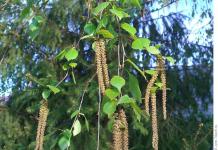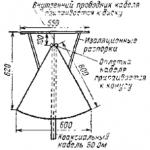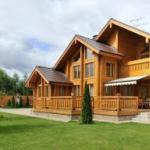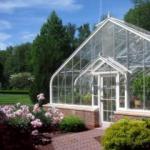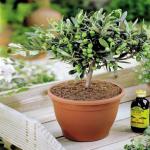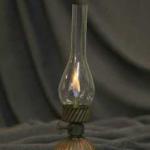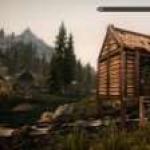In adulthood, it is well distinguished from other trees by its white bark. In older trees, the bark in the lower part of the trunk becomes deeply fissured, black.
Outside Russia, it is distributed throughout almost all of Europe, with the exception of the Iberian Peninsula, in North Africa, in Western and Central Asia. Of the birch species it has the largest range. In the mountains, this birch rises to a height of 2,100-2,500 m above sea level. Introduced throughout the temperate climate zone.
Significance and application
Easily machinable. Extremely resistant to decay. Best kept submerged in water.
The buds and leaves are used in folk and official medicine; they have a diuretic, choleretic, diaphoretic, blood purifying, bactericidal, anti-inflammatory and wound-healing effect.
Spring juice is a tasty and healthy drink.
The leaves secrete phytoncides that can kill pathogens within 3 hours.
Decorative garden forms and cultivars
Form "Laciniata". Shoots and leaves.
"Youngii" form. General form.
- "Dalecarlica" (or Betula pendula (L.f.) C.K.Schneid.- the so-called Dalecarlian Birch) is an extremely rare form with leaves cut to the point of openwork.
- "Laciniata" - characterized by deeply cut leaves; rare in culture (often mistaken for the simpler form "Crispa", sometimes called Betula pendula var. crispa).
- "Purpurea" - in this form the leaves have a deep reddish-purple hue in the spring, more bronze in the summer, bronze-green and even copper-orange in the fall. The leaf shape is normal. The shoots have a black-purple tint and retain it all summer; the bark is not as white as that of the main species.
- "Trost's Dwarf" is a compact, rounded shrub up to 1.2 m tall. The light green leaves of this dwarf form, up to 5 cm long, strongly dissected into narrow linear lobes, sitting on short branches, form graceful “balls” that look no worse than the palmate maple (Acer palmatum Thunb.), with the only difference that this maple is very capricious and does not want to grow in Russia.
- "Youngii" is a small tree without a main trunk with a weeping (almost umbrella-shaped) shape.
- "Gracilis" is a variety with a weeping crown shape. The leaves are smaller than those of the wild form and deeply dissected.
- "Fastigiata" - the crown is low, columnar, expanding upward with age. The branches start from the base of the trunk and go upward. A close variety is "Obelisk". Used for planting in small gardens.
- "Tristis" - usually retains a central trunk from which branches hang, forming a very narrow crown. Leaves are dissected.
Literature
- Grozdova N. B., Nekrasov V. I., Globa-Mikhailenko D. A. Trees, shrubs and vines: A reference guide. - M.: Lesn. industry, 1986. - pp. 110-111.
- Lishchinskaya S. N. Ecological and biological features of silver birch ( Betula pendula Roth.) as a component of man-made forest plantations in Samara. - Author's abstract. dis. for the competition scientist step. Ph.D. biol. Sciences. - Samara. - 2003. - 18 p.
- Tree species of the world. In 3 volumes. T. 3. Tree species of the USSR. - M.: Lesn. industry, 1982. - pp. 54-57.
- Plant life. In 6 volumes. T. 5. Part 1. Flowering plants. - 1980. - P. 320.
- Skvortsov V. E. Educational atlas. Flora of Central Russia. - M.: CheRo, 2004. - P. 103.
- Konovalova T.Yu., Shevyreva N.A. Ornamental trees and shrubs: Atlas-determinant. - M: CJSC "Fiton +", 2007. - S. 90. - ISBN 978-5-93457-157-4
|
Crown shape |
Mature tree bark |
Old tree bark |
Male flowers |
|
Warts |
Sheet. Summer coloring |
Autumn color |
Wood. Cross cut |
Links
- Silver birch: Taxonomy on the GRIN website
- Silver birch on the USDA NRCS website
Wikimedia Foundation. 2010 .
fragrant birch- karpotasis beržas statusas T sritis vardynas apibrėžtis Beržinių šeimos dekoratyvinis, vaistinis augalas (Betula pendula), paplitęs Europoje, Azijoje ir Afrikoje. Iš jo gaunama derva. atitikmenys: lot. Betula pendula engl. common birch; European... ... Lithuanian dictionary (lietuvių žodynas)
weeping birch- karpotasis beržas statusas T sritis vardynas apibrėžtis Beržinių šeimos dekoratyvinis, vaistinis augalas (Betula pendula), paplitęs Europoje, Azijoje ir Afrikoje. Iš jo gaunama derva. atitikmenys: lot. Betula pendula engl. common birch; European... ... Lithuanian dictionary (lietuvių žodynas)
silver birch- karpotasis beržas statusas T sritis vardynas apibrėžtis Beržinių šeimos dekoratyvinis, vaistinis augalas (Betula pendula), paplitęs Europoje, Azijoje ir Afrikoje. Iš jo gaunama derva. atitikmenys: lot. Betula pendula engl. common birch; European... ... Lithuanian dictionary (lietuvių žodynas)
- (Betula), a genus of trees and shrubs of the birch family (Betulaceae), which also includes alder, hornbeam and hazel. About 40 species are found throughout the Northern Hemisphere from the Arctic to Texas, Southern Europe, the Himalayas and Japan. Birches are found... ... Collier Encyclopedia
BIRCH, a genus of trees and shrubs of the birch family. Typically, 120,140 (according to other sources, 65) species are identified in the temperate and cold zones of the Northern Hemisphere and in the mountains of the subtropics. Forest-forming and decorative breed. The largest economic ... ... encyclopedic Dictionary
A genus of trees and shrubs of the birch family. Typically, 120,140 (according to other sources, 65) species are identified in the temperate and cold zones of the Northern Hemisphere and in the mountains of the subtropics. Forest-forming and decorative species. The greatest economic importance... Big Encyclopedic Dictionary
birch- white-legged (Kuzmin); white (Bashkin, Nekrasov, Pleshcheev); white-trunked (Aksakov); cheerfully green (Sologub); thoughtful (Balmont, Ldov, Fofanov); shaggy (Budishchev. Turgenev); curly (Corinthian); curly (Mam. Sibiryak, Nekrasov, K.R., ... ... Dictionary of epithets
MINISTRY OF HEALTH OF THE RUSSIAN FEDERATION
PHARMACOPOEIAL ARTICLE
Birch leaves FS.2.5.0005.15
Betulae folia Instead of VFS 42-2487-95
Collected during the growing season (June - July) and dried leaves of wild silver birch (warty birch) trees - Betula pendula Roth. (Betula verrucosa Ehrh.) and downy birch – Betulapubescens Ehrh, sem. birch – Betulaceae.
AUTHENTICITY
External signs
Whole raw materials. Whole or partially crushed leaves, simple, petiolate, without stipules. The leaf blades are rhombic, triangular or triangular-ovate in shape, from 3.0 to 6.5 cm long, from 2.0 to 5.5 cm wide. The leaf apex is pointed, the base is wedge-shaped, rounded. The edge of the leaf blade is twice serrate. The venation is pinnate. The leaf blade is slightly pubescent over the entire surface on both sides ( B. pubescens) or almost naked, with sparse hairs along the edge closer to the apex and along the veins on the underside ( B. pendula), golden-yellow shiny glands over the entire surface on both sides of the leaf blade and on the petiole. The color of the leaves on the upper side is green, brownish-green, on the lower side - light green, gray-green, light brownish-green. The smell is peculiar, weakly aromatic. The taste of the water extract is bitter.
Crushed raw materials. Pieces of leaf blades of various shapes and petioles passing through a sieve with 5 mm holes.
B. pubescens) or naked ( B. pendula
The color of the crushed raw materials is from green to brownish-green with light green, gray-green and rare yellowish-brown, yellowish-white or brown inclusions.
The smell is peculiar, weakly aromatic. The taste of the water extract is bitter.
Powder. Pieces of leaf blades of various shapes and petioles passing through a sieve with 2 mm holes.
When viewed under a magnifying glass (10×) or a stereomicroscope (16×), pieces of leaf blades with a finely serrated or double serrated edge, with sparse hairs on both sides are visible ( B. pubescens) or naked ( B. pendula), with golden-yellow shiny glands all over the surface on both sides; pieces of petioles, rarely - twigs with yellowish-white wood and brown bark.
The color of the powder ranges from green to brownish-green with light green, gray-green and rare yellowish-brown, yellowish-white or brown inclusions. The smell is peculiar, weakly aromatic. The taste of the water extract is bitter.
Microscopic signs
Whole, crushed raw materials and powder. When examining a leaf from the surface, epidermal cells on the upper side of the leaf should be visible, consisting of cells of a regular 4–6-gonal shape with smooth walls. The epidermal cells of the lower side of the leaf blade are more sinuous in outline, comparable in size to the cells of the upper epidermis or slightly smaller. Stomata are anomocytic type. There are 4–8 peristomatal cells, usually 6. Stomata are located mainly on the underside of the leaf blade. On a cross section, two- or three-layer columnar mesophyll should be visible. Large rhombic-shaped crystals and small drusen are localized in the lining parenchyma of the veins of the leaf blade.
Large thyroid glands should be visible on the epidermis, located on both sides of the leaf, usually along the veins. Glands with large colorless heads. The heads consist of a large number of cells and are located in rays from the center. The cuticle above the head is powerful, scaly, and often peels off, exposing the cells that form the trichome head. The cells of the stalk of the glands are usually stained with a dark brown pigment. The cuticle causes the glossy, slightly rough surface of the leaf. Along the veins and along the edge of the leaf blade there are simple unicellular hairs with thick walls, an expanded base and a pointed apex. Druses of calcium oxalate are visible near the veins. Thyroid glands of a characteristic structure and sparse small hairs are visible on the epidermis of the leaf petiole.
When examining micropreparations of the powder, fragments should be visible: the epidermis of the upper side of the leaf, consisting of cells of a regular 4–6-gonal shape; epidermis of the underside of the leaf with convoluted cell walls; leaf epidermis with rounded stomata of anomocytic type; veins with large rhombic crystals and small drusen in the lining parenchyma; leaf epidermis with large corymbose glands; veins and leaf margins with simple unicellular hairs with thick walls, widened base and pointed apex; petiole epidermis with corymbose glands and small simple hairs; as well as individual fallen off thyroid glands and simple hairs.
Drawing – Birch leaves.
1 – fragment of the epidermis of the lower side of the leaf: a – stomata of anomocytic type, b – gland (200×); 2 – fragment of petiole epidermis with small simple hair (200×); 3 – simple thick-walled hairs (200×); 4 – druses (a) and prismatic crystals (b) of calcium oxalate (200×).
Determination of the main groups of biologically active substances
Thin layer chromatography
About 1.0 g of raw material, crushed to the size of particles passing through a sieve with holes measuring 1 mm, is placed in a flask with a capacity of 50 ml, 10 ml of 40% alcohol is added and heated at reflux at moderate boiling on an electric stove with a closed spiral for 15 min. The extract is filtered through a paper filter with a red stripe (test solution).
On the starting line of an analytical chromatographic plate with a layer of silica gel with a fluorescent indicator on an aluminum substrate measuring 10 × 15 cm, apply 6 μl of the test solution, 10 μl of a standard sample solution (SS) of hyperoside (see section “Quantitative determination” preparation of solution A CO of hyperoside). The plate with the applied samples is dried in air, placed in a chamber pre-saturated for at least 1 hour with a mixture of solvents: chloroform - 96% alcohol - water (26:16:3), and chromatographed using an ascending method. When the front of solvents has passed about 80 - 90% of the length of the plate from the starting line, it is removed from the chamber, dried until traces of solvents are removed and viewed in UV light at a wavelength of 254 nm.
The chromatogram of the test solution should show a dominant purple adsorption zone at the level of the adsorption zone on the chromatogram of the hyperoside CO solution; detection of other adsorption zones is allowed.
The plate is treated with freshly prepared diazo reagent, placed in a drying oven and kept at a temperature of 110 ° C for 5 minutes and viewed in daylight.
The chromatogram of the test solution should show a dominant yellowish-orange adsorption zone at the level of the hyperoside CO adsorption zone; detection of other adsorption zones is allowed.
TESTS
Humidity
Whole raw materials crushed raw materials, powder- no more
12 %.
Total ash
Whole raw materials crushed raw materials, powder- no more
7 %.
Ash, insoluble in hydrochloric acid
Whole raw materials crushed raw materials, powder– no more than 2%.
Raw material grinding
Whole raw materials: particles passing through a sieve with holes measuring 3 mm - no more than 5%. Crushed raw materials: particles that do not pass through a sieve with holes measuring 5 mm - no more
5 %; particles passing through a sieve with holes measuring 0.18 mm - no more than 5%. Powder: particles that do not pass through a sieve with holes measuring 2 mm - no more than 5%; particles passing through a sieve with holes measuring 0.18 mm - no more than 5%.
Foreign matter
Other parts of the plant (branches, parts of inflorescences) . Whole raw materials crushed raw materials – no more than 2%.
Raw materials that have changed color (yellowed and blackened). no more than 5%.
Organic impurity
.
Whole raw materials, crushed raw materials – no more
1 %.
Mineral impurity . Whole raw materials, crushed raw materials, powder– no more than 1%.
Heavy metals
Radionuclides
In accordance with the requirements of the General Pharmacopoeia Monograph “Determination of radionuclide content in medicinal plant materials and medicinal herbal preparations.”
Pesticide residues
According to requirements.
Microbiological purity
According to requirements.
quantitation
Whole Raw Material, crushed raw materials, powder: the content of the total flavonoids in terms of hyperoside is not less than 1.5%.
Preparation of solutions.
Hyperoside CO solution. About 0.02 g (exactly weighed) of hyperoside CO is dissolved in a 50 ml volumetric flask in 35 ml of 70% alcohol with periodic stirring, the volume of the solution is adjusted to the mark with the same alcohol and mixed (solution A of hyperoside CO).
1.0 ml of solution A CO hyperoside is placed in a 25 ml volumetric flask, 1 ml of aluminum chloride solution 2% and 1 drop of diluted acetic acid 30% are added, the volume of the solution is adjusted to the mark with 96% alcohol and mixed (solution B CO hyperoside).
Shelf life of solutions is 30 days.
An analytical sample of raw materials is crushed to the size of particles passing through a sieve with holes measuring 1 mm. About 1.0 (exactly weighed) of crushed raw material is placed in a 250 ml conical flask with a ground-in stopper, 100 ml of 50% alcohol is added and weighed with an accuracy of ± 0.01 g. The flask with the contents is connected to a reflux condenser and heated in a boiling water bath for 2 hours. After cooling to room temperature, weigh the flask, bring its contents with 50% alcohol to the original mass, mix and filter through a paper filter (solution A of the test solution).
1.0 ml of solution A of the test solution is placed in a 25 ml volumetric flask, 1 ml of aluminum chloride solution 2% in 96% alcohol and 1 drop of diluted acetic acid 30% are added, the volume of the solution is adjusted to the mark with 96% alcohol and mixed (solution B test solution).
The optical density of solution B of the test solution is measured after 30 minutes on a spectrophotometer at a wavelength of 410 nm in a cuvette with a layer thickness of 10 mm. As a reference solution, use a solution consisting of 1.0 ml of solution A of the test solution, 1 drop of acetic acid diluted 30%, brought to the mark with 96% alcohol in a 25 ml volumetric flask.
In parallel, the optical density of hyperoside B CO solution is measured under the same conditions. As a reference solution, use a solution consisting of 1.0 ml of hyperoside CO solution A, 1 drop of acetic acid diluted 30%, brought to the mark with 96% alcohol in a 25 ml volumetric flask.
A
A o is the optical density of the hyperoside BCO solution;
a o – sample of SS of hyperoside, g;
A– weight of raw materials, g;
R – content of the main substance in hyperoside CO,%;
W– moisture content of raw materials, %.
It is allowed to calculate the content of the total flavonoids using the specific absorption rate of the hyperoside complex with aluminum chloride according to the formula:

A– optical density of solution B of the test solution;
– specific absorption index of the hyperoside complex with aluminum chloride at a wavelength of 410 nm, equal to 380.
A– weight of raw materials, g;
W– raw material humidity, %;
Packaging, labeling and transportation
According to requirements.
International scientific name: the type species of the Birch genus is Betula pubescens Common birch, or downy birch, of the Birch family (Latin Betulaceae) of the order Fagales.
In the recent past, white birch (lat. Betula alba) was often used as a synonomic taxon, which was the conventional name for the two most common species of the Birch genus. These are the species: Silver birch, or warty birch (lat. Betula pendula) and downy birch, or common birch (lat. Betula pubescens). Therefore, it was decided, in order to avoid confusion in the coverage of a typical representative of the genus, not to use the name White Birch.
The Birch genus has one hundred and thirteen main and hybrid species. Species representatives of the genus have a high degree of polymorphism.
Growth area
 It grows throughout Europe, even in the British Isles and Spain. Typically observed in the Scandinavian countries, northern Europe and eastern Asia. Birch is the only type of deciduous tree that can grow in Lapland. Some species are found in North America and the Far East.
It grows throughout Europe, even in the British Isles and Spain. Typically observed in the Scandinavian countries, northern Europe and eastern Asia. Birch is the only type of deciduous tree that can grow in Lapland. Some species are found in North America and the Far East.
Birch is the most common tree species in Russia; we can say that it grows almost throughout the entire territory of Russia. And for this reason, this tree is considered a symbol of this country.
Botanical description of birch
Downy birch is a deciduous monoecious tree up to 20 m in height, some specimens reach 27 meters. The average age of a birch is 60-120 years. A tree with a slender crown and trunk up to 70 cm (in exceptional cases up to 1 m) in diameter, with smooth but dull gray-white bark, marked by thin, dark horizontal lentils.
The white color of the trunk is given by a resinous substance - betulin, located in the cellular cavity of cork tissue. The shoots are pubescent gray-brown. The outer part of the bark, which easily peels off in long strips, is called birch bark. Birch leaves are pointedly ovate with a heart-shaped base, 2-5 cm long and 1.5-4.5 cm wide. They are attached by pubescent petioles 1-2.5 cm long. The edges of the leaf blade have a finely serrated, double-toothed edge. The flowers are inconspicuous, monoecious, collected in hanging inflorescences of catkins on a short petiole. The flowers are wind-pollinated, and therefore, both male and female catkins appear in early spring before the leaves bloom.
The fruit is hanging, cylindrical, 1 to 4 cm long and 5 to 7 mm wide. Due to the large number of seed scales, the fruit resembles an oval or oblong cylindrical cone, which disintegrates in the fall when fully ripe, releasing individual nut seeds. These seeds are 2mm long with two small wings along either side.

wood features
It is a sapwood species. The heartwood and sapwood are diffusely vascular, white, with a slight yellowish or reddish tint, not differing from each other in shade throughout the entire cross-section. The annual layers are poorly visible in all sections. The vessels are small, invisible in cross-section and uniformly scattered. Early wood is usually lighter in color. The fibers intersected along the longitudinal sections create a thin streak characteristic of birch. The texture is uniform, fine-grained with an attractive satin sheen.
Wood technical characteristics
 Soft (Brinell coefficient - 3.0-3.2). Moderately viscous and moderately heavy (density 610-670 kg/m3). Easily tinted. Not resistant to rotting, requires additional processing. Dries without defects, but shrinks significantly in volume. Easily amenable to mechanical processing.
Soft (Brinell coefficient - 3.0-3.2). Moderately viscous and moderately heavy (density 610-670 kg/m3). Easily tinted. Not resistant to rotting, requires additional processing. Dries without defects, but shrinks significantly in volume. Easily amenable to mechanical processing.
Application of birch
The main application is the production of veneer and plywood. Also manufacturing furniture, parquet, matches, barrels. Widely used in folk art (birch bark weaving, wood carving). It is also used in the medical industry: everyone knows birch tar, which is the basis of Vishnevsky’s ointment. Birch sap is popular in the food industry.
Mythology and symbolism
Even in Celtic mythology, the birch symbolized renewal and cleansing. Bunches of birch twigs are still used to drive out spirits. This is the use of birch brooms in baths or brooms for cleaning the house. Birch is also used as a symbol of love and fertility. In Scottish folklore, a barren cow was herded with a birch stick so that she would give birth.

Rice. 5.31. Silver birch – Betula pendula Roth
birch buds- gemmae betulae Birch leaves - folia betulae
birch drooping(b. Warty) - betula pendula roth (= b. Verrucosa ehrh.)
birch fluffy- betula pubescens ehrh.
Sem. birch-betulaceae
birch drooping(b. warty) - a deciduous tree 10-20 m high with white, easily peeling bark. In old trees, the base of the trunk is black-gray, with deep cracks.
branches hanging, young shoots are reddish-brown, densely planted with resinous glands - warts.
Leaves alternate, petiolate, with an ovate-rhombic, triangular-ovate or oval-ovate plate, 3-6.5 cm long, 2-5.5 cm wide; the base of the plate is broadly wedge-shaped or truncated; the apex is pointed; the venation is pinnately reticulate.
leaf edge double-toothed, with dark brown tips of the teeth.
flowers small, dioecious (monoecious plants), collected in drooping catkins.
Fetus– winged nut (lionfish), with two membranous wings (Fig. 5.31).
blooms in May, the fruits ripen in August - September.
birch fluffy different from b. pendulous with shorter branches directed upwards and to the sides, soft pubescence of young shoots and oval-ovate, more leathery leaves with a rounded base.
Spreading. Silver birch has a vast Eurasian range, the eastern border of which reaches Lake Baikal. The species is common in forest and forest-steppe zones. Absent in the Far North and South. Downy birch is common in the same places as b. pendulous, but extends much further to the north.
Habitat. Birches form pure and mixed forests, birch groves, and are found in different types of forest. Silver birch grows on dry and moist soils: sandy, loamy, chernozem, rocky and gravelly. In its ecology, downy birch is close to silver birch, but is more adapted to the harsh climatic conditions of the North. It is found in damper places and extends further to the northeast.
The buds are elongated-conical, pointed or blunt, often sticky. The covering scales are arranged in a tiled manner, tightly pressed along the edges, slightly ciliated (the lower ones are shorter than the upper ones and sometimes with slightly lagging tips); the length of the buds is 3-7 mm, the width is 1.5-3 mm.
Color buds are brown, sometimes greenish at the base.
Smell balsamic, pleasant.
Taste slightly astringent, resinous.
Leaves
The leaves are whole or partially crushed, slightly leathery, rhombic or broadly ovate in shape with a serrated edge, with brown glands on the underside.
Smell weak, pleasant.
Taste bitter, resinous.
Benign leaves are green; yellowed leaves are not allowed.
Numerical indicators of raw materials
kidneys
Essential oil not less than 0.2% humidity not more than 10% total ash not more than 4% ash insoluble in a 10% solution of hydrochloric acid, not more than 0.7% other parts of birch (twigs, including those separated from the buds during analysis, catkins, etc.) no more than 8% of buds that have begun to grow and slightly blossomed, no more than 2% organic impurity, no more than 1% mineral impurity, no more than 0.5%.
Leaves
Amount of phenolic compounds in terms of rutin not less than 2% humidity not more than 10% total ash not more than 7% other parts of birch (branches, parts of inflorescences) not more than 5% blackened leaves not more than 5% organic impurity not more than 1% mineral impurity not more than 1%.
When examining the kidney scales visible from the surface epidermal cells, slightly elongated, with straight, and in some places clearly thickened walls.
Stomata on the outer epidermis of anomocytic type, located in recesses.
Stomatal guard cells 2-3 times larger than epidermal ones.
Along the edge of the scales and veins there are simple unicellular hairs with brown contents and a warty surface.
In mesophyll Numerous calcium oxalate drusen are visible.
When examining the leaf primordium large ones are visible from the surface brown glands on the cloves they have the shape of a cone, on the surface of the leaf - in the form of a mushroom.
The glands consist of rounded or slightly longitudinally elongated inner cells filled with brown contents, and radially elongated transparent outer cells.
Leaves
Have diagnostic value
multicellular glands located along the leaf blade and at the tips of the denticles,
as well as large drusen of calcium oxalate along the veins.
The epidermis is slightly convoluted, the stomata are anomocytic.
blank. The buds are harvested in January - April before they bloom (before the covering scales at the top of the bud diverge). Collection should be carried out in forest areas intended for felling or designated for harvesting brooms, with the permission of the forestry department. The branches with buds are cut, tied into bundles (brooms) and dried, and after drying the buds are threshed.
Young leaves are collected in May–June during the birch flowering period, when they are soft, sticky, and fragrant.
Drying. Branches with buds are dried for 3-4 weeks in the open air or in a well-ventilated area. Heat drying is unacceptable to prevent the buds from germinating. The leaves are air-dried in the shade or in attics. Heat drying is allowed at a temperature of 30-35 ºС.
Standardization. Birch buds - GF XI, issue. 2, st . 41 birch leaves - VFS 42-2487-95.
Storage. In a dry, well-ventilated area on racks or shelves, packed in bags, separately from other types of raw materials. The shelf life of buds is 2 years, leaves - 3 years.
Birch buds contain
3-5.3 (8)% essential oil,
resinous substances.
Oil is a thick yellow liquid with a pleasant balsamic odor. The oil contains
bicyclic sesquiterpenoids - betulen, betulenol, betulenol acid.
Chemical composition of birch leaves
Found in leaves
0.04-0.05% essential oil,
ascorbic acid (up to 2.8%),
carotenoids,
triterpene alcohols,
coumarins (0.44%),
flavonoids (1.96%),
tannins (5-9%),
saponins (up to 3.2%).
Activated carbon and tar are obtained from birch wood.
Chemical composition of birch tar
Tar(Pix liquida Betulae) is obtained by dry distillation of wood. The composition of tar includes:
phenol,
cresols,
dioxybenzenes,
guaiacol and other compounds of this series.
Infusions and decoctions of birch buds and leaves have
diuretic,
choleretic,
expectorant,
sweatshop and
anti-inflammatory action.
Tincture of birch buds (1:5) exhibits
antimicrobial activity against antibiotic-resistant forms of staphylococci isolated from patients with various forms of purulent infection (mastitis, furunculosis, phlegmon, abscesses, peritonitis).
In the experiment, alcohol preparations from birch leaves turned out to be active against
Giardia,
Trichomonas and
ciliates,
while isolated anthocyanins, saponins and polyphenols did not have this activity.
Antiviral activity noted in aqueous-alcoholic tincture of birch leaves.
Birch leaves also have an anti-inflammatory effect.
Pharmacological properties of birch sap
Birch sap has
general strengthening,
vitamins and
enzymatic properties.
Using radiotelemetric studies, it was discovered in patients with gastric and duodenal ulcers stimulating effect of birch sap on acid formation, especially pronounced when the acid-forming function of the stomach decreases.
Birch pollen can cause spring hay fever.
Pharmacological properties of birch tar
Tar has
antimicrobial,
insecticidal and
In domestic medicine, birch has been used as a medicinal product for centuries. All parts used:
Birch buds,
leaves,
Birch juice,
tar,
birch charcoal.
Application of birch buds and leaves
Birch buds and leaves are used
for edema of cardiac origin as a diuretic.
In case of functional renal failure, this type of treatment is not recommended due to possible irritation of the renal tissue by resinous substances.
Choleretic properties of leaves used for diseases of the liver and biliary tract.
In addition, they are used
for bronchitis,
tracheitis in
as a disinfectant and expectorant.
Birch preparations are used also for
hygienic and
medicinal baths.
Infusions and decoctions of birch buds and leaves used in otolaryngology and dentistry as
anti-inflammatory,
decongestant and
epithelializing agent
stomatitis,
gingivitis,
periodontal disease,
sore throat,
chronic tonsillitis,
acute respiratory diseases in the form of rinses and applications of gauze napkins moistened with infusions or decoctions.
Application of birch tar
Tar has
antimicrobial,
insecticidal and
local irritant properties.
Used in the form ointments, liniments, sulfur-tar soap for
Birch wood (activated) carbon is used at
flatulence,
colitis,
increased acidity of gastric juice,
in case of poisoning with heavy metals, alkaloids,
for food intoxication.
Birch buds, raw materials. Diuretic, disinfectant.
Birch leaves, crushed raw materials. Diuretic, disinfectant.
Contains the diuretic collection “Bequorin” (birch leaves).
Birch leaf extract is included in complex medicines (“Sibektan”, “Uroflux”, “Fitolysin”).
Birch tar, a thick oily liquid for external use (a product of dry distillation of the outer part of birch bark). Disinfectant, insecticidal, local wound healing agent. Included in Wilkinson's ointment, balsamic liniment according to A.V. Vishnevsky, sulfur-tar soap, etc.
Birch (Betula)
Birch leaves contain essential oil with a pleasant balsamic odor (up to 0.8%), which includes the sesquiterpene alcohol betulol (25 - 47%) and its esters with acetic acid (30 - 40%), the bicyclic sesquiterpene lactone betulen, triterpene bicyclic alcohols, triterpenoid betulin. The leaves also contain flavone and flavonol glycosides (1.96–5.56%): hyperoside, rutin, avicularin tannins, coumarins, phenolcarboxylic acids, vitamins E, C, PP, carotenoids.
Birch buds contain essential oil (0.2–8%), consisting of the sesquiterpene alcohol betulol (25–47%) and its esters with acetic acid (30–40%), betulenic and palmitic acid, bicyclic sesquiterpene lactones of betulen, sesquiterpene β -caryophyllene and its monoxide, triterpene bicyclic alcohols α-, β- and γ-betulenols - 1.8–14%, α-betulenol acetate, betulin triterpenoid, alkaloids (0.1%), naphthalene, paraffin, yellow dye, n -pentacosane, resin (5-hydroxy-7,4-dimethoxyflavone).
Birch buds also contain flavone and flavonol glycosides (1.96–5.56%): hyperoside (0.8-1.5%), 5-hydroxy-7,4-dimethoxyflavone (0.3%), 3- Myricetin D-digalactoside (0.37%), quercitrin (0.14%), avicularin (0.57%), quercetin 3-glucuronide (0.25%), isorhamnetin, other kaempferol and apigenin derivative sterols, tannins ( 1.07–9%), bitters, coumarins (0.09–0.44%), anthocyanins, resins (betulester), butyl ester of betulorethic acid, 8–10% sugars, inositol, ascorbic acid (up to 2.8%) and nicotinic acid, nicotinamide, carotene.

Silver birch (Betula pendula Roth.)
Silver birch (Betula pendula Roth.) is a deciduous tree up to 20 m high with smooth white, easily exfoliating bark. The branches are usually drooping, young shoots are red-brown, bare, covered with resinous glands - warts. The leaves are alternate, ovate-rhombic or triangular-ovate, with a wide wedge-shaped or almost truncated base, doubly sharp-toothed along the edges, bare young leaves are sticky. The flowers are collected in male and female inflorescences. The fruit is a lionfish with two membranous wings, 2-3 times the width of the fruit.
Silver birch has a wide range, covering the entire European part of Russia, except for the Far North and South, Western and partly Central Siberia, Northern Kazakhstan, Western Tien Shan and the Caucasus. In the east, the range reaches Baikal. It forms pure and mixed forests in forest and forest-steppe zones, and is especially abundant in river valleys. In the same habitats, downy birch - Betula pubescens - is common, the buds of which are also allowed for harvesting. It is distinguished by shorter, non-hanging branches. Annual shoots are without warts and covered with short small hairs.
Buds are harvested in January - March, winter and early spring before they bloom. They are collected only in forest areas intended for logging. The branches are cut, tied into bundles, and dried for 3-4 weeks in the open air or in a well-ventilated area. The buds are then threshed and cleared of impurities. Typically, 100 kg of fresh buds yield 40-45 kg of dry buds. Store in a dry, ventilated area.

Silver birch (Betula pendula Roth.)
Birch buds - Gemmae Betulae. Dried buds are used as medicine. The buds have a conical shape, bare (without pubescence), covered with tiled-like, tightly pressed along the edges, slightly ciliated scales 3-7 mm long, 1.5-3 mm in diameter. The color of the buds is brown, brown, at the base there is sometimes a greenish balsamic smell, the taste, which intensifies when rubbed, is slightly astringent, resinous.
Birch buds contain up to 5% essential oil, flavonoids, vitamins, and tannins.
In folk medicine, buds and leaves were widely used to regulate the activity of the gastrointestinal tract, for diseases of the liver and bladder, rheumatism, and gout. Birch tar, obtained from the bark, was used for rheumatism, liver diseases, in veterinary medicine - for the treatment of wounds and purulent diseases, for colic, as an anthelmintic. Birch sap is known as a general tonic and stimulant; it is used to make kvass, syrup, and vinegar.
Currently, birch buds are used in the form of decoctions as a disinfectant, diuretic, and choleretic agent, due to the content of flavonoids and essential oils. Birch tar, which is included in ointments used to treat wounds and skin diseases, is also of practical importance. Activated birch charcoal is used in tablet form as an adsorbent for poisoning, food intoxication, and flatulence.









